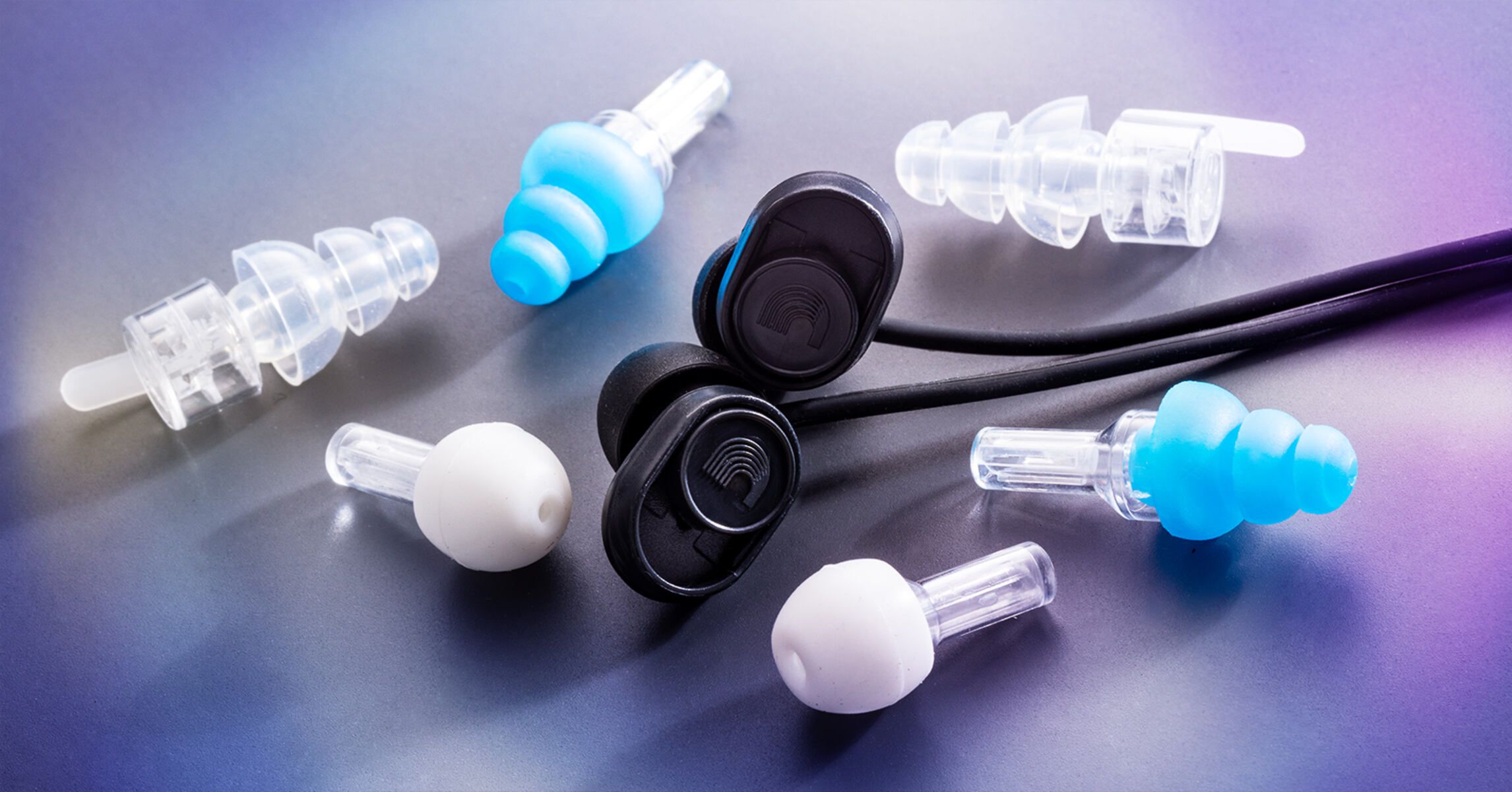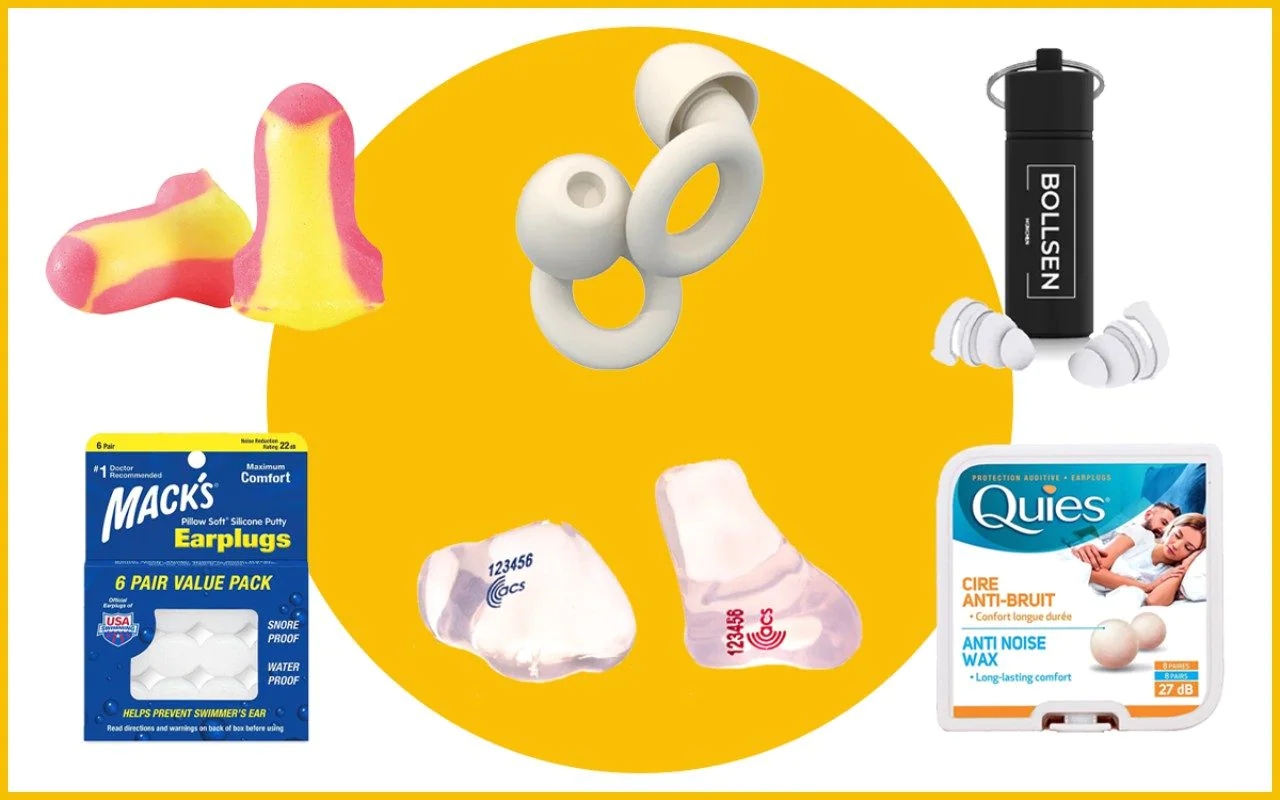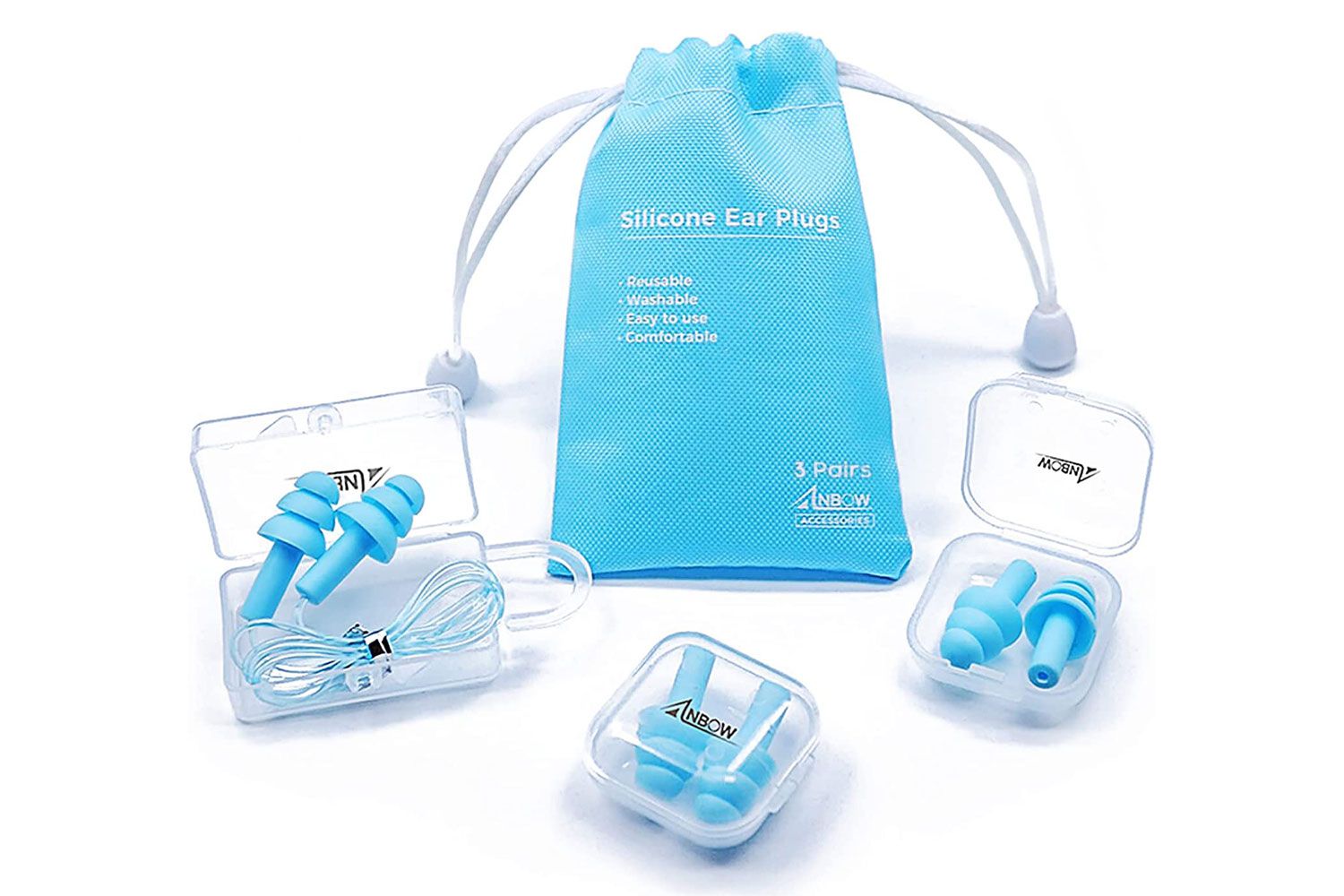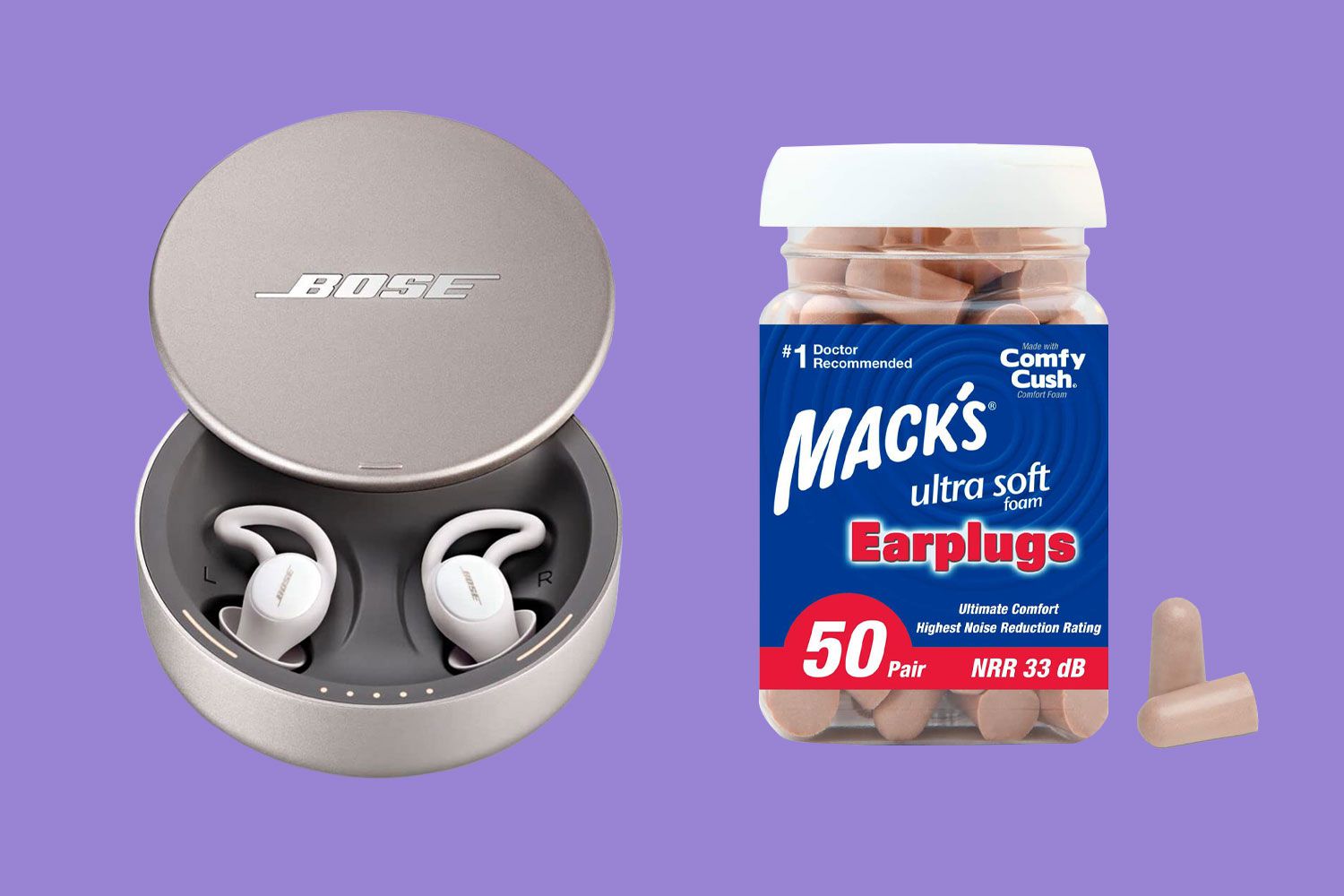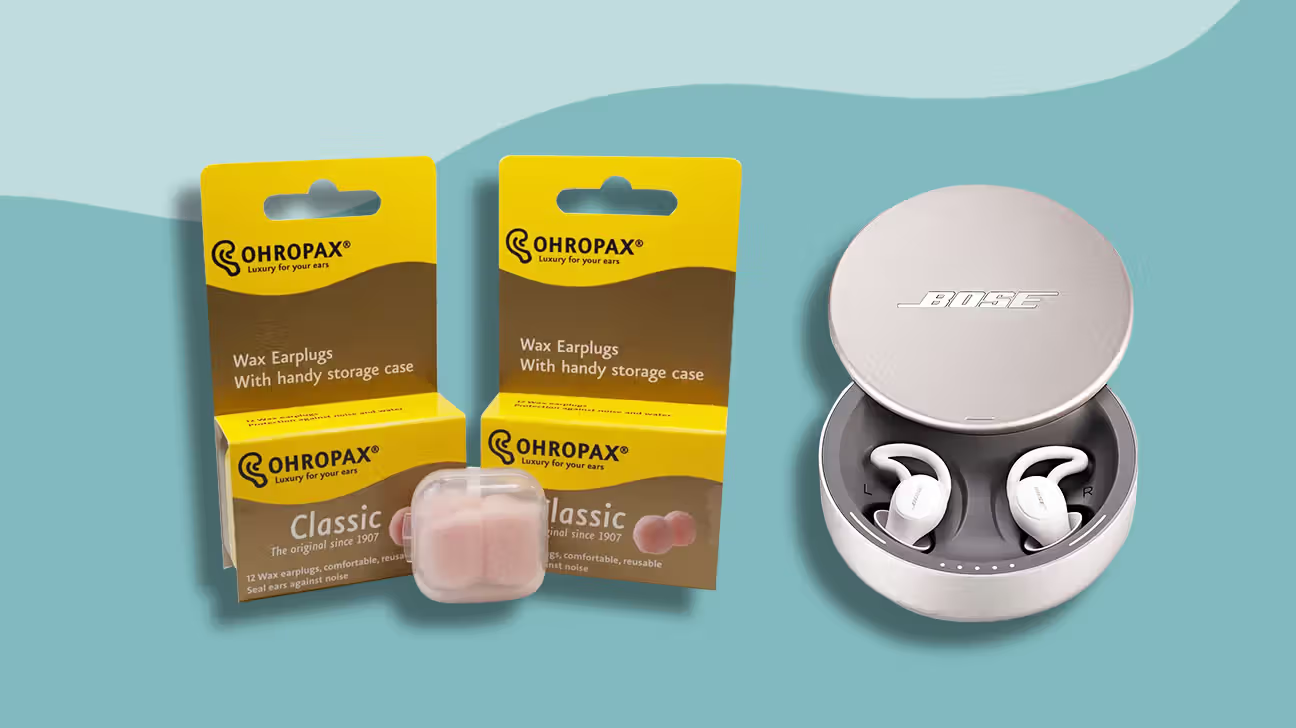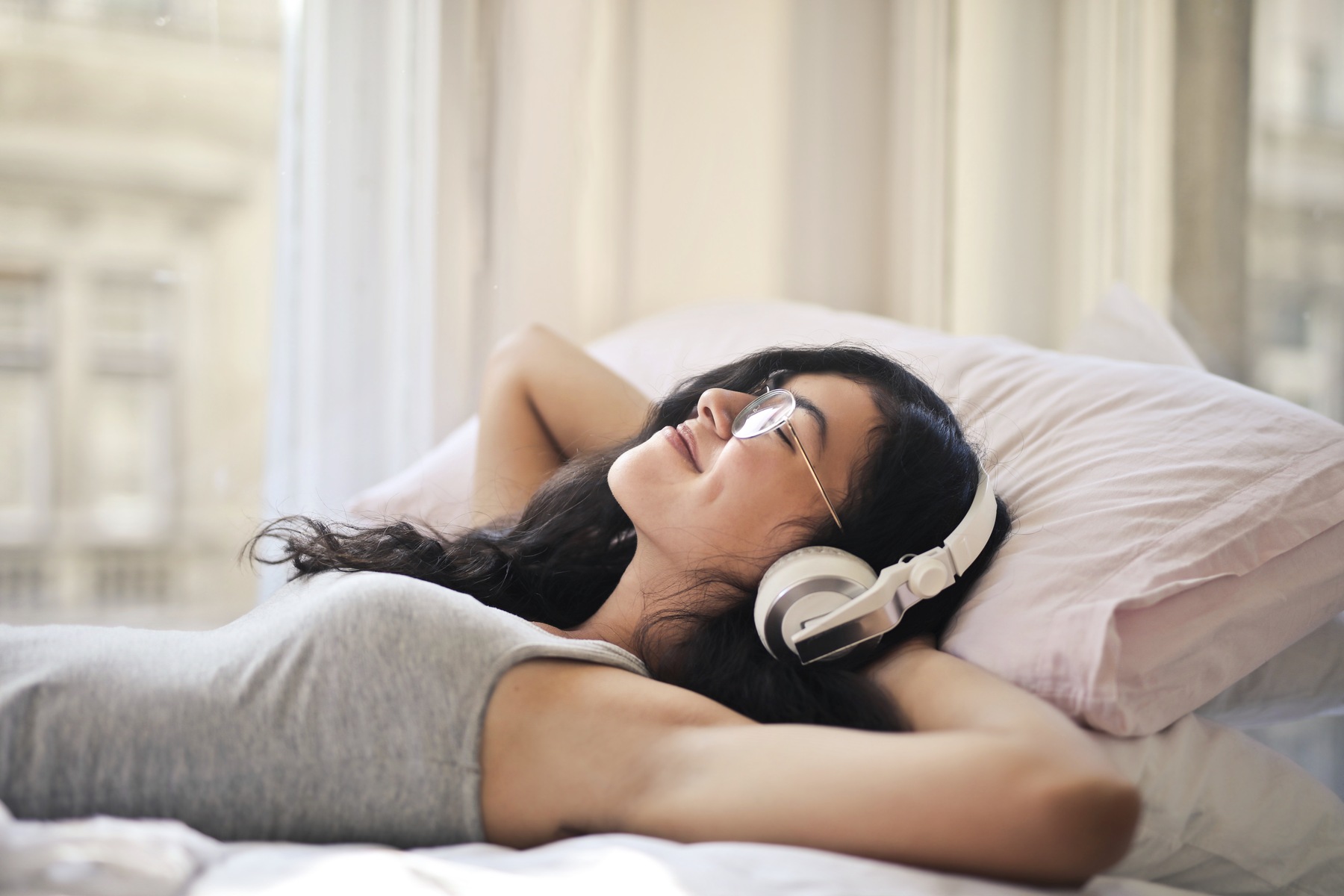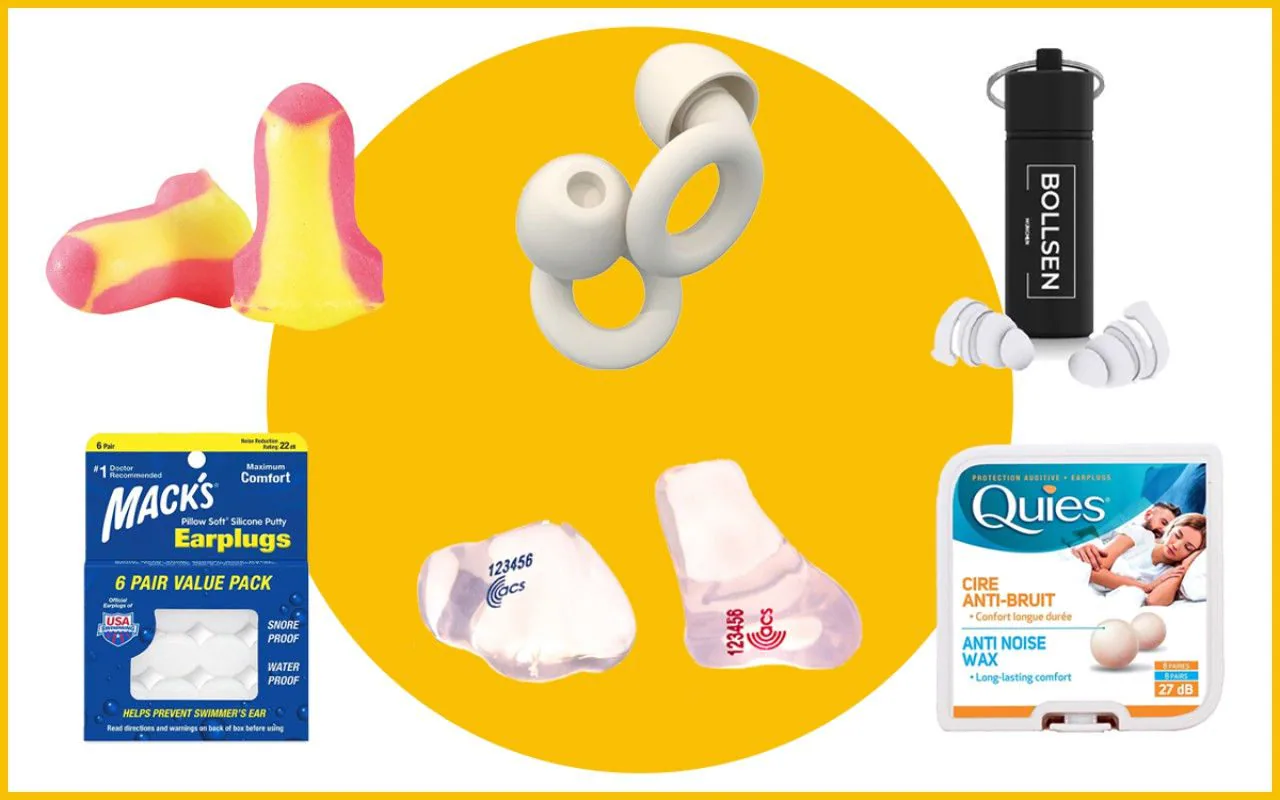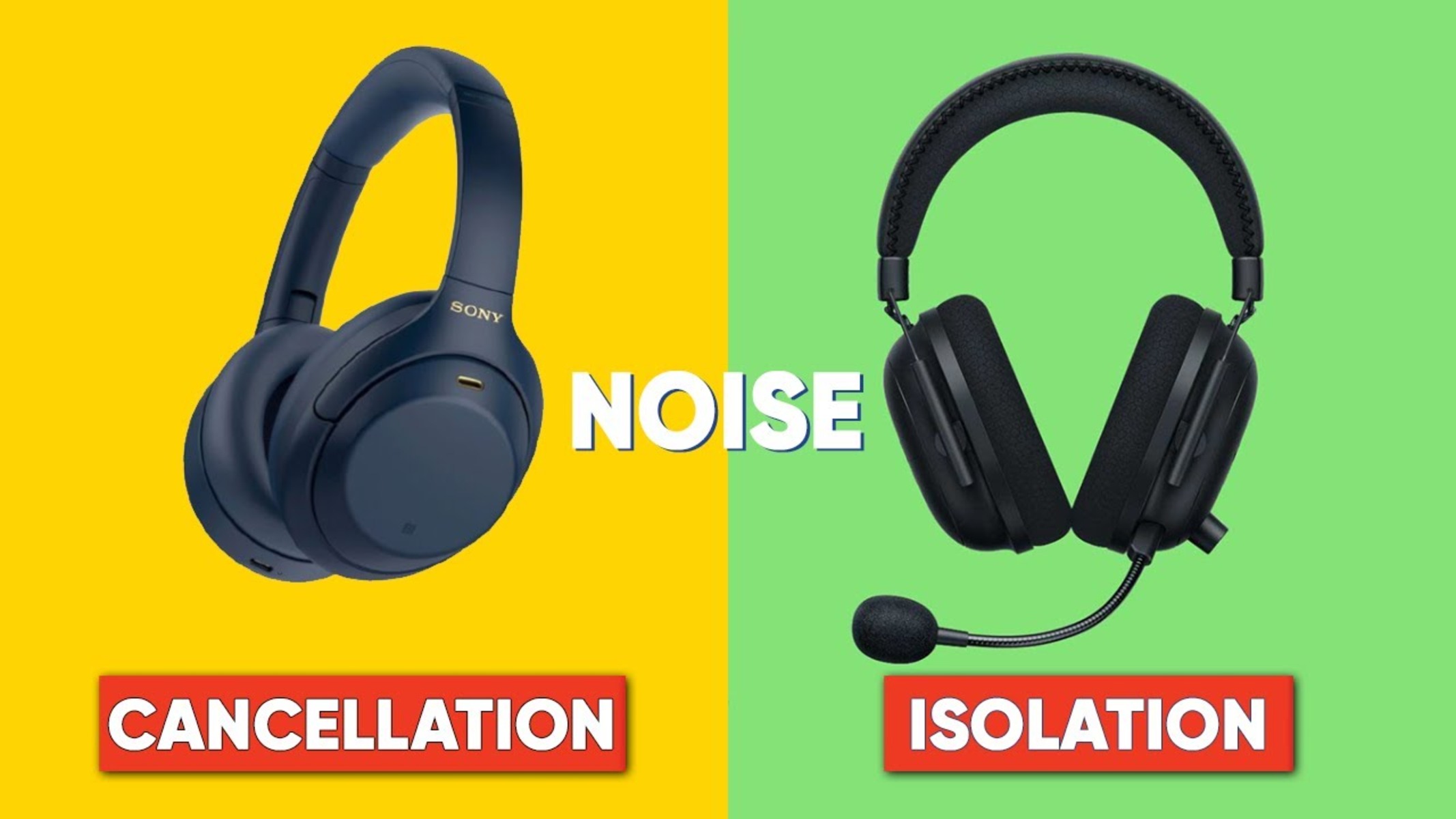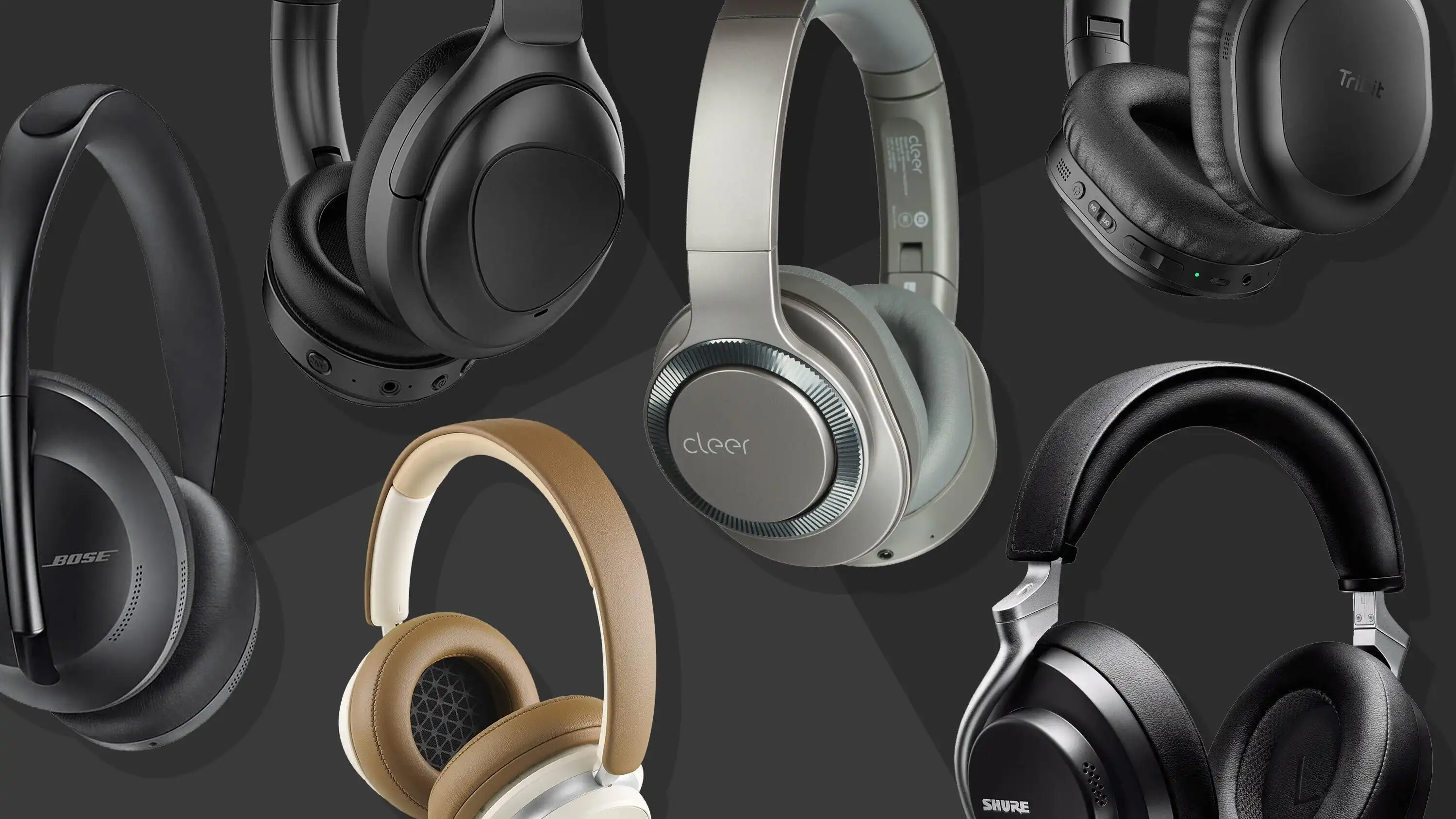Introduction
Noise can be a constant distraction in our daily lives, whether it’s the bustling city streets, a noisy office environment, or snoring partners. In such situations, noise cancelling earplugs can be a game-changer. Designed to block out unwanted sounds, these earplugs offer a peaceful escape and provide a range of benefits to enhance your well-being.
With the growing popularity of noise cancelling technology in headphones, it’s no surprise that noise cancelling earplugs have also gained traction. These compact devices are specifically designed to block or reduce external noises, offering a quieter environment for better concentration, relaxation, and sleep.
While traditional earplugs are effective at reducing noise levels, noise cancelling earplugs take it a step further. They use advanced technology to actively cancel out unwanted sounds, creating a virtual “sound barrier” that allows you to experience peace and quiet even in the noisiest of environments.
This article will delve into the world of noise cancelling earplugs, exploring how they work, the benefits they offer, and what to consider when choosing the best ones for your needs. Whether you’re a frequent traveler, a light sleeper, or simply seeking respite from the cacophony of daily life, noise cancelling earplugs could be the solution you’ve been looking for.
So, let’s dive in and discover the wonders of noise cancelling earplugs and how they can transform your auditory experience!
What Are Noise Cancelling Earplugs?
Noise cancelling earplugs are specialized devices designed to reduce or eliminate unwanted sounds by using active noise control technology. Unlike traditional earplugs that primarily act as a physical barrier to block sounds, noise cancelling earplugs utilize electronic circuitry to detect and counteract incoming noises.
These earplugs typically consist of three main components: a microphone, a speaker, and a noise cancelling circuit. The microphone picks up the surrounding sounds, which are then analyzed by the circuit to identify the frequencies and amplitudes of the noise. The circuit then generates an inverse sound wave that is played through the speaker, effectively canceling out the targeted noise.
One of the key advantages of noise cancelling earplugs is their versatility. They can be used in a wide range of environments where noise reduction is desired, such as airplane cabins, busy offices, construction sites, or even at home when you need some tranquility.
Furthermore, noise cancelling earplugs are available in various designs to cater to different needs and preferences. Some models come in the form of traditional earplugs, which are inserted into the ear canal to provide a comfortable and secure fit. Others are designed as earbuds or headphones, providing both noise cancellation and audio playback capabilities.
It’s important to note that noise cancelling earplugs are not meant to completely block out all sounds. Instead, they aim to reduce the overall volume and intensity of the noise, making it more tolerable and less distracting. This allows you to enjoy a quieter experience while still maintaining awareness of your surroundings.
With the ability to minimize or eliminate unwanted sounds, noise cancelling earplugs offer a valuable solution for individuals who seek peace and quiet in loud environments. Whether you want to improve your focus at work, relax during a long flight, or get a restful night’s sleep, noise cancelling earplugs can be an invaluable asset in your quest for tranquility.
How Do Noise Cancelling Earplugs Work?
Noise cancelling earplugs employ advanced technology to actively reduce or eliminate unwanted sounds. Unlike traditional earplugs that solely rely on physical barriers to block noise, noise cancelling earplugs use a combination of electronics and acoustic design to achieve their noise reduction capabilities.
The process begins with a built-in microphone in the earplugs that detects external sounds. This microphone captures the audio signals from the surrounding environment and converts them into electrical signals. These electrical signals are then processed by a small electronic circuit contained within the earplugs.
The electronic circuit analyzes the incoming sound waves, identifying the frequencies and amplitudes of the noise. Once the noise has been analyzed, the circuit generates an opposite sound wave with the same amplitude but with an inverted phase. This inverse sound wave is produced by a speaker or transducer within the earplugs.
When the inverse sound wave meets the original sound wave in the ear canal, they combine and effectively cancel each other out. This cancellation process is known as destructive interference, resulting in a significant reduction in the perceived volume of the noise.
The effectiveness of noise cancelling earplugs is dependent on their ability to accurately measure and generate the opposite sound wave. To achieve this precision, the electronic circuit constantly adjusts the inverse sound wave based on the detected noise. This real-time adjustment ensures that the earplugs can effectively counteract a wide range of frequencies and amplitudes.
It’s important to note that noise cancelling earplugs are particularly effective at reducing constant low-frequency noises, such as the humming of an air conditioner or the rumble of a train. However, they may be less effective in blocking sudden or high-pitched sounds, as these require a more rapid adjustment of the inverse sound wave.
Overall, the combination of the microphone, electronic circuit, and speaker in noise cancelling earplugs allows for active noise control. By detecting and generating inverse sound waves, these earplugs provide a more immersive and peaceful auditory experience in noisy environments.
Benefits of Using Noise Cancelling Earplugs
Noise cancelling earplugs offer a multitude of benefits that make them a valuable tool in various situations. Here are some of the key advantages of using noise cancelling earplugs:
- Reduced noise distractions: One of the most significant benefits of noise cancelling earplugs is their ability to reduce noise distractions. Whether you’re in a busy office, commuting on public transportation, or trying to sleep in a noisy environment, these earplugs can help create a quieter space for enhanced focus, relaxation, or sleep.
- Improved sleep quality: For individuals who struggle to sleep due to external noises such as snoring, traffic, or loud neighbors, noise cancelling earplugs can be a game-changer. By reducing the volume of these noises, the earplugs create a more peaceful sleeping environment, allowing for a restful night’s sleep.
- Enhanced travel experience: Traveling can often involve loud and disruptive noises, particularly on airplanes, trains, or in bustling terminals. Noise cancelling earplugs can help mitigate these noises, allowing you to enjoy a quieter and more comfortable journey. Additionally, by reducing the impact of engine noise, they can alleviate ear discomfort during takeoff and landing.
- Improved focus and productivity: In a noisy workplace or study setting, concentration can be challenging. Noise cancelling earplugs help create a focused environment by reducing background noises, allowing you to concentrate better and improve productivity.
- Protecting hearing health: Continuous exposure to loud noises can damage your hearing over time. By reducing the volume of external sounds, noise cancelling earplugs act as a protective barrier for your ears, minimizing the risk of long-term hearing damage.
In addition, some noise cancelling earplugs offer the option to listen to audio while still blocking out external noises. This feature allows you to enjoy your favorite music, podcasts, or audiobooks while simultaneously benefitting from the noise reduction capabilities of the earplugs.
Overall, noise cancelling earplugs provide a range of benefits that contribute to a more peaceful and enjoyable auditory experience. Whether you’re seeking to improve your focus, sleep better, or simply find relief from the constant barrage of noise in your daily life, noise cancelling earplugs can significantly enhance your well-being.
Factors to Consider When Choosing Noise Cancelling Earplugs
When it comes to selecting noise cancelling earplugs, there are several factors to consider to ensure you find the right ones for your needs. Here are some important considerations to keep in mind:
- Noise Reduction Rating (NRR): The NRR is a measure of how effectively the earplugs reduce noise. It indicates the maximum amount of noise reduction that can be achieved with a particular set of earplugs. Consider your specific noise environment and choose earplugs with an appropriate NRR. Keep in mind that a higher NRR doesn’t necessarily mean better performance for all frequencies.
- Comfort and Fit: Comfort is crucial when wearing earplugs for extended periods. Look for earplugs made of soft and hypoallergenic materials that won’t cause irritation. Consider the size, shape, and design of the earplugs to ensure a secure and snug fit. Some earplugs come with adjustable tips or wings for a more customized fit.
- Battery Life: For electronic noise cancelling earplugs, battery life is an important factor to consider. Check the expected battery life and whether the earplugs use rechargeable or replaceable batteries. Longer battery life ensures you can rely on the earplugs for extended periods without needing frequent replacements or recharging.
- Controls and Settings: Different noise cancelling earplugs offer varying levels of control and settings. Look for earplugs with easy-to-use control buttons or touch panels for adjusting the noise cancellation levels. Some earplugs may even include smartphone apps that allow for further customization and control.
- Audio Playback: If you want the option to listen to music or other audio content, consider noise cancelling earplugs that provide audio playback capabilities. These earplugs often come with built-in speakers or the ability to connect to external devices via Bluetooth.
- Portability: If you plan on using your noise cancelling earplugs while traveling, ensure they are compact, lightweight, and easy to carry. Look for earplugs that come with a portable carrying case to protect them while on the go.
Additionally, it’s essential to check customer reviews and feedback to gauge the performance and reliability of the noise cancelling earplugs you’re considering. Comparing different brands and models can help you make an informed decision and find the earplugs that best meet your expectations.
By taking these factors into account, you can choose noise cancelling earplugs that offer the right level of noise reduction, comfort, and functionality to enhance your auditory experience in various environments.
Top 5 Noise Cancelling Earplugs on the Market
With a wide range of noise cancelling earplugs available, it can be challenging to determine which ones are the best for your needs. To help narrow down your choices, here are five top-rated noise cancelling earplugs on the market:
- Bose QuietComfort Earbuds: Known for their exceptional sound quality, Bose QuietComfort Earbuds offer excellent noise cancellation capabilities. They feature a comfortable and secure fit, customizable noise control settings, and impressive battery life. These earbuds are ideal for both everyday use and travel.
- 3M Peltor Optime III Earmuffs: If you prefer over-ear protection, the 3M Peltor Optime III Earmuffs are a popular choice. With a high NRR of 35dB, these earmuffs provide exceptional noise reduction, making them well-suited for loud industrial environments or shooting ranges. They also feature a comfortable headband and durable construction.
- Etymotic Research ER20 ETY-Plugs: The Etymotic Research ER20 ETY-Plugs are affordable and effective noise cancelling earplugs. Designed with a low-profile, these earplugs offer a flat attenuation, allowing for a more natural listening experience while still reducing noise. They are particularly popular for live music events and concerts.
- Flare Audio Isolate 2: The Flare Audio Isolate 2 earplugs are unique in their design and functionality. Made from solid aluminum with a titanium coating, these earplugs offer both passive and active noise reduction. They provide a snug fit and are ideal for musicians, frequent travelers, or individuals seeking high-quality noise reduction.
- Howard Leight by Honeywell MAX Disposable Foam Earplugs: For a cost-effective option, the Howard Leight by Honeywell MAX Disposable Foam Earplugs are highly regarded. These soft foam earplugs expand to fit the ear canal and offer reliable noise reduction. With an NRR of 33dB, they are suitable for various environments, from construction sites to noisy offices.
It’s important to note that while these noise cancelling earplugs have received positive reviews and are popular choices among users, individual preferences and requirements may vary. Consider your specific needs, budget, and the level of noise reduction required to determine which earplugs are the best fit for you.
Remember to read customer reviews, check product specifications, and compare features to make an informed decision that aligns with your desired level of noise cancellation and overall comfort.
Noise Cancelling Earplugs vs. Noise Isolating Earplugs: What’s the Difference?
When it comes to reducing unwanted noise, two common options are noise cancelling earplugs and noise isolating earplugs. While they both aim to provide a quieter environment, there are fundamental differences between the two.
Noise Cancelling Earplugs: Noise cancelling earplugs utilize advanced electronic technology to actively counteract external noise. They contain a microphone, circuitry, and a speaker that work together to detect incoming sounds, create an inverse sound wave, and cancel out the noise. The active noise cancelling technology is effective in reducing consistent low-frequency noises, such as engine sounds or background hum. Noise cancelling earplugs are typically more expensive than noise isolating earplugs due to the electronic components and require batteries or rechargeable power to operate.
Noise Isolating Earplugs: Noise isolating earplugs, on the other hand, work by physically blocking sounds from entering the ear canal. They rely on a tight seal between the earplug material and the ear canal to create a barrier that reduces noise. Noise isolating earplugs are typically made from foam, silicone, or rubber, and they come in various shapes and sizes to fit different ear canal sizes. These earplugs are generally more affordable than noise cancelling earplugs and do not require any power source to function.
The effectiveness of noise isolating earplugs depends on the quality of the seal and the material’s ability to dampen sound. Foam earplugs, for example, expand to fill the ear canal and block out noise. Silicone or rubber earplugs may have specialized designs to create a tight fit and minimize sound transmission.
While noise cancelling earplugs actively counteract noise, noise isolating earplugs passively block out external sounds. Noise isolating earplugs are capable of reducing a broader range of sounds, including sudden or high-pitched noises, as they do not rely on detecting and generating an inverse sound wave. However, when it comes to consistent low-frequency noises, noise cancelling earplugs tend to be more effective.
Ultimately, the choice between noise cancelling earplugs and noise isolating earplugs depends on your specific needs and preferences. If you require excellent noise reduction for low-frequency sounds and appreciate the convenience of active cancellation technology, noise cancelling earplugs are a suitable choice. On the other hand, if you prefer a more affordable option or need a broader range of noise reduction, noise isolating earplugs can be a reliable solution.
Consider the specific noise environment you will be in, the types of sounds you want to block out, and your budget when deciding between noise cancelling earplugs and noise isolating earplugs. Both options have their advantages and can provide significant noise reduction to enhance your auditory experience.
How to Properly Use Noise Cancelling Earplugs
To effectively utilize noise cancelling earplugs and maximize their noise reduction capabilities, it’s important to follow these steps to ensure proper usage:
- Select the Right Size: Choose noise cancelling earplugs that fit your ear canal comfortably and snugly. The earplugs should create a proper seal to block out external noise effectively. Some earplugs come in various sizes, so you may need to try different options to find the best fit.
- Clean Your Ears: Before inserting the earplugs, make sure your ears are clean and dry. Remove any earwax or debris to ensure proper fit and optimal performance of the earplugs.
- Follow Manufacturing Instructions: Each pair of noise cancelling earplugs may have specific instructions provided by the manufacturer. Read and follow these instructions carefully to ensure proper use and maintenance of the earplugs. This may include information about battery installation and charging (if applicable) or any specific cleaning or maintenance procedures.
- Insert the Earplugs Correctly: Gently roll or fold the earplugs according to the instructions provided. Reach over your head with the opposite hand and pull your ear slightly upward and backwards to straighten the ear canal. Insert the earplugs into your ear canal and hold them in place until they expand to create a secure seal.
- Ensure a Proper Seal: Once the earplugs have expanded, gently press on them to ensure they are properly sealed within your ear canal. A proper seal is crucial for effective noise reduction. If the earplugs feel uncomfortable or if the noise reduction is inadequate, try adjusting or reinserting them for a better fit.
- Adjust Noise Cancelling Settings: If your noise cancelling earplugs have adjustable noise cancellation levels, experiment with different settings to find the right balance between noise reduction and awareness of your surroundings. This is particularly important in situations where maintaining situational awareness is necessary, such as when traveling or walking in busy areas.
- Store the Earplugs Properly: After use, clean the earplugs according to the manufacturer’s instructions and store them in the provided case or a clean and dry storage container. This will help keep the earplugs in good condition and ready for future use.
It’s important to remember that noise cancelling earplugs should not be used in situations where complete isolation from the environment is necessary for safety reasons, such as when crossing streets or operating heavy machinery. Always prioritize your safety and be aware of your surroundings, even when using noise cancelling earplugs.
By following these guidelines, you can ensure that your noise cancelling earplugs provide optimal noise reduction, comfort, and a pleasant auditory experience in various environments.
Conclusion
Noise cancelling earplugs are powerful tools that offer a range of benefits, allowing you to create a quieter and more comfortable environment in the midst of noise. Whether you’re trying to focus at work, unwind during travel, or get a restful night’s sleep, noise cancelling earplugs can significantly enhance your well-being.
By actively countering unwanted sounds, noise cancelling earplugs provide a level of noise reduction that traditional earplugs cannot achieve. These earplugs utilize advanced technology to detect incoming noises and generate inverse sound waves that cancel out the noise, providing a more peaceful auditory experience.
When choosing noise cancelling earplugs, consider factors such as the Noise Reduction Rating (NRR), comfort and fit, battery life (if applicable), controls and settings, audio playback capabilities, and portability. These considerations will help you select the earplugs that best meet your specific needs and preferences.
It’s also important to be aware of the difference between noise cancelling earplugs and noise isolating earplugs. While noise cancelling earplugs actively counteract external noises, noise isolating earplugs work by physically blocking sounds. Understanding this distinction will allow you to choose the appropriate type of earplugs for your requirements.
Remember to properly use noise cancelling earplugs by selecting the right size, cleaning your ears, following the manufacturer’s instructions, inserting the earplugs correctly, ensuring a proper seal, adjusting noise cancelling settings, and storing the earplugs properly after use.
In conclusion, noise cancelling earplugs provide a practical and effective solution to create a quieter space in noisy environments. Whether for work, travel, or sleep, these earplugs can significantly enhance your ability to concentrate, relax, and enjoy a more peaceful auditory experience. Invest in a pair of noise cancelling earplugs that suits your needs and prepare to experience the benefits of a calmer and more tranquil environment.







